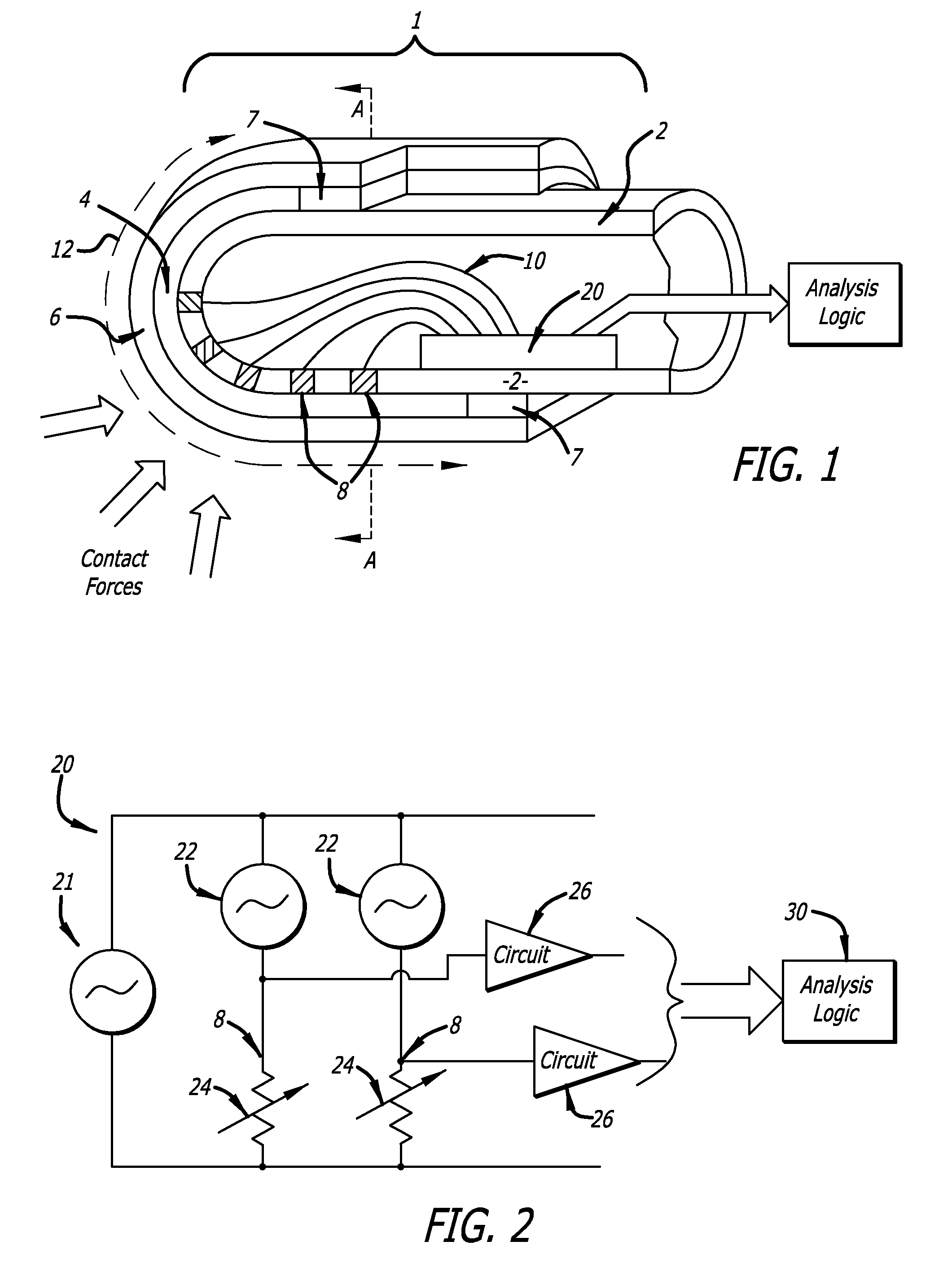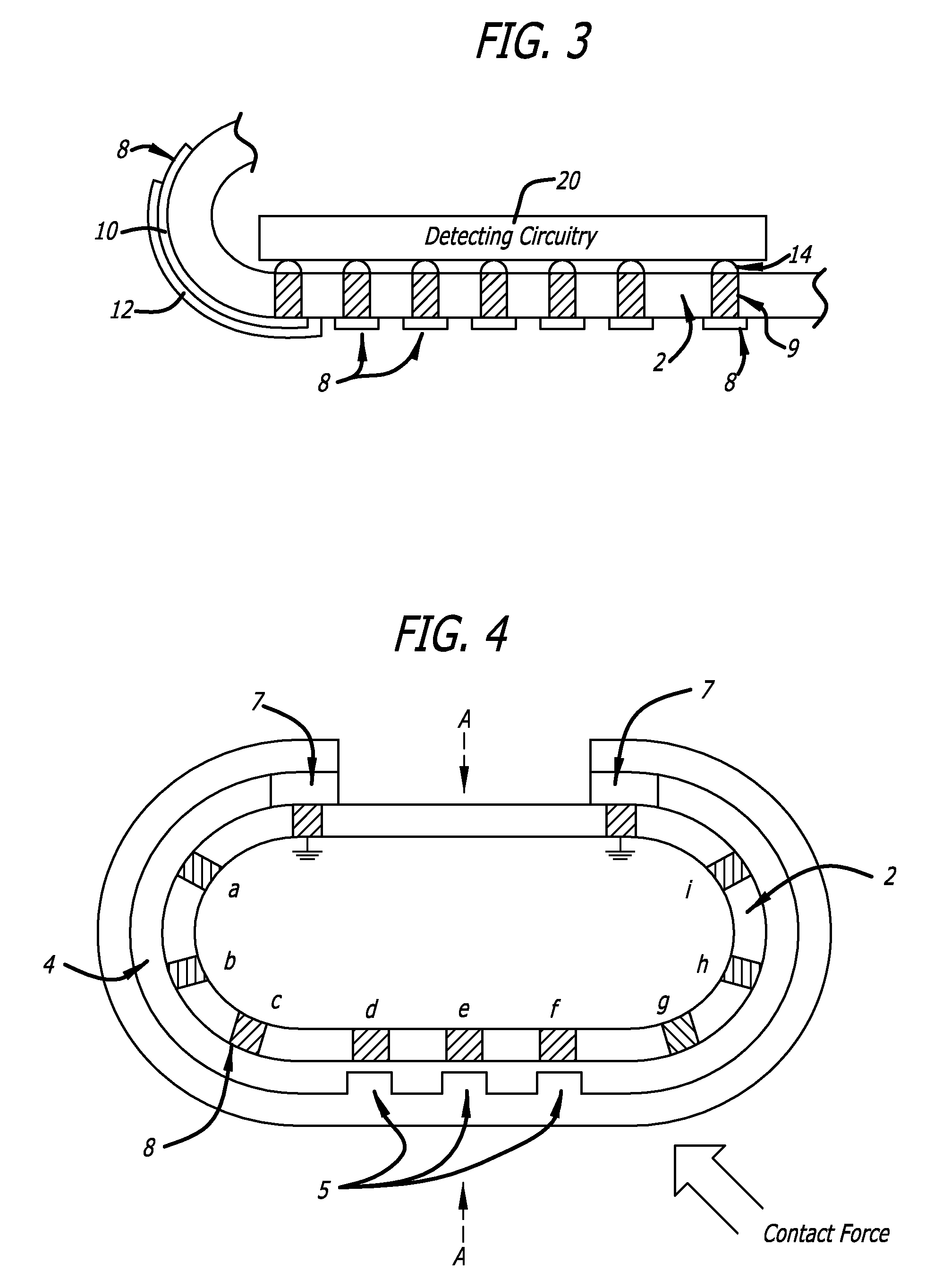Biomimetic tactile sensor for control of grip
a technology of biomimetic and tactile sensors, applied in the direction of force/torque/work measurement apparatus, instruments, manufacturing tools, etc., can solve the problems of preventing the development of evoluted robots for off-factory jobs, industrial robots lacking the sensorial abilities of humans, and unable to carry out delicate tasks. , to achieve the effect of softness, elasticity and mechanical resistan
- Summary
- Abstract
- Description
- Claims
- Application Information
AI Technical Summary
Benefits of technology
Problems solved by technology
Method used
Image
Examples
Embodiment Construction
[0038]The detailed description set forth below is intended as a description of exemplary embodiments of the tactile sensory system and method and is not intended to represent the only embodiments in which the biomimetic tactile sensor systems and methods can be practiced. The term “exemplary” used throughout this description means “serving as an example, instance, or illustration,” and should not necessarily be construed as preferred or advantageous over other embodiments. The detailed description includes specific details for the purpose of providing a thorough understanding of the tactile sensory systems and methods. However, it will be apparent to those skilled in the art that the tactile sensory systems and methods may be practiced without these specific details. In some instances, well-known structures and devices are shown in block diagram form in order to avoid obscuring the concepts of the tactile sensory systems and methods.
[0039]The following articles are referred to throu...
PUM
| Property | Measurement | Unit |
|---|---|---|
| Log impedance | aaaaa | aaaaa |
| force | aaaaa | aaaaa |
| frequencies | aaaaa | aaaaa |
Abstract
Description
Claims
Application Information
 Login to View More
Login to View More - R&D
- Intellectual Property
- Life Sciences
- Materials
- Tech Scout
- Unparalleled Data Quality
- Higher Quality Content
- 60% Fewer Hallucinations
Browse by: Latest US Patents, China's latest patents, Technical Efficacy Thesaurus, Application Domain, Technology Topic, Popular Technical Reports.
© 2025 PatSnap. All rights reserved.Legal|Privacy policy|Modern Slavery Act Transparency Statement|Sitemap|About US| Contact US: help@patsnap.com



